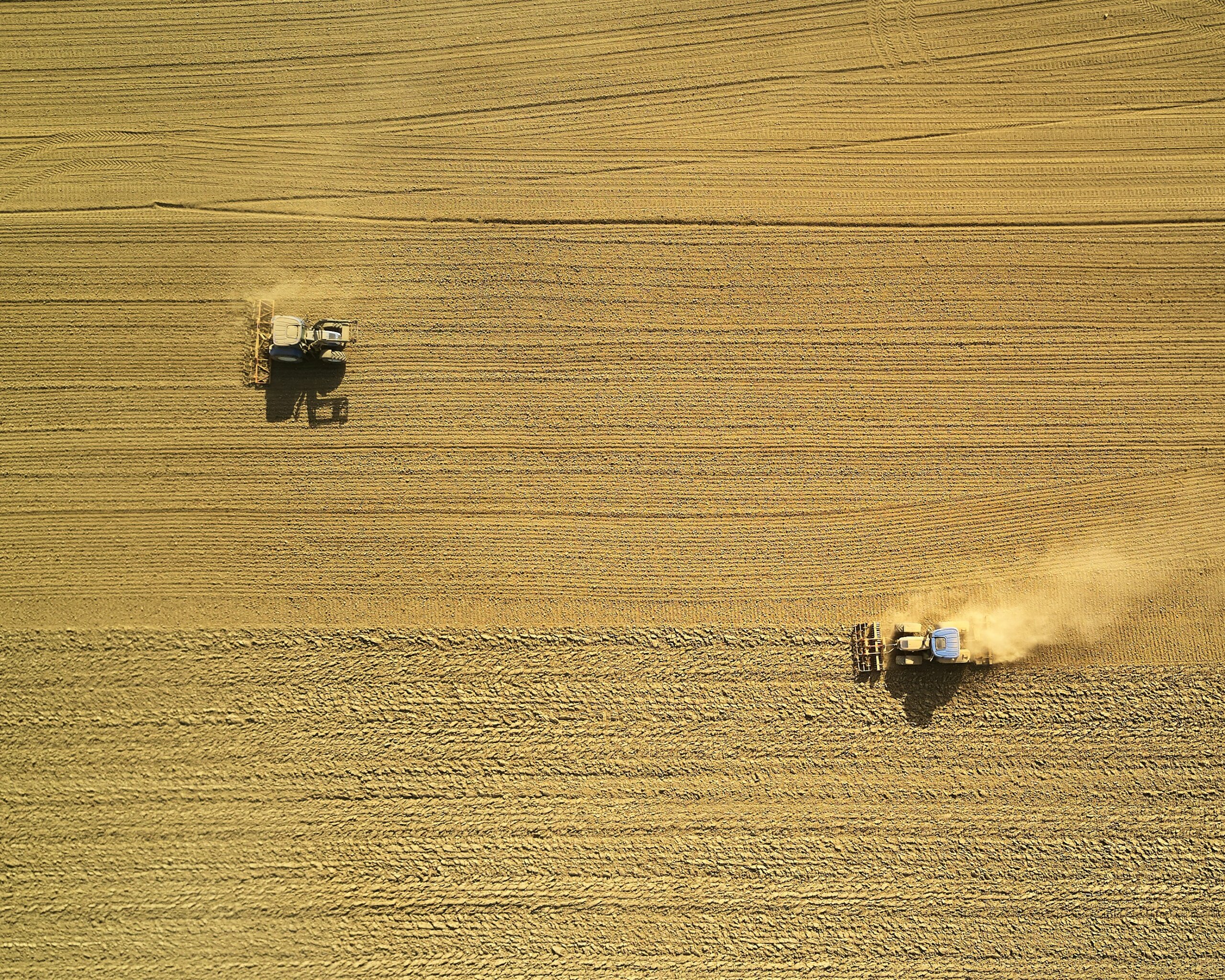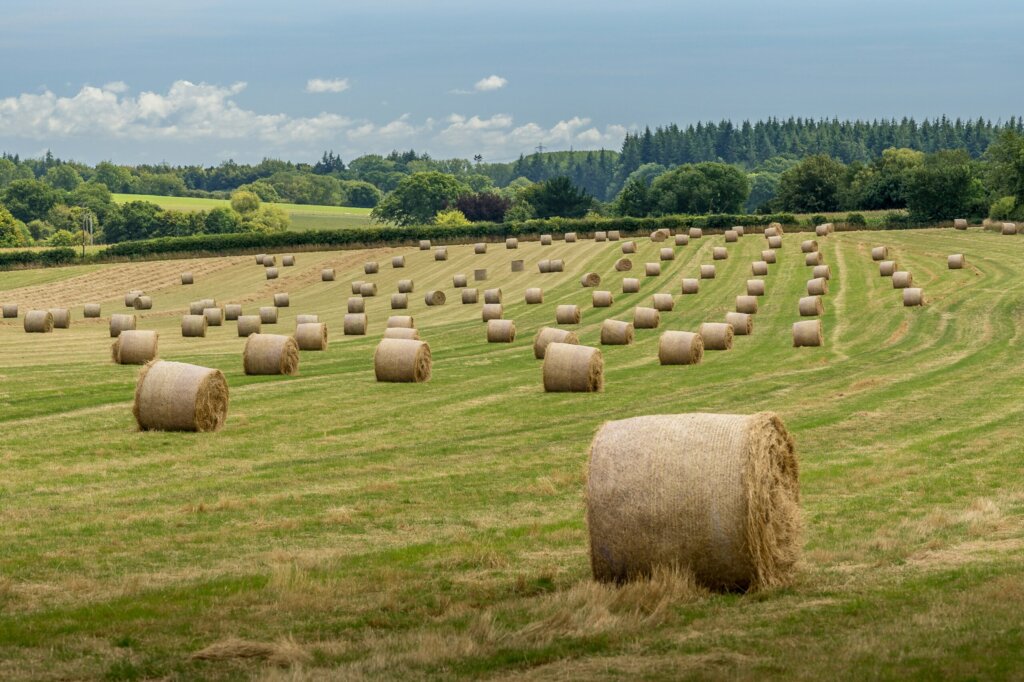
Developing biodegradable plastics for the Agricultural industry
Blog
Developing biodegradable plastics for the Agricultural industry
Authored By: SDI Plastics
The agricultural industry is an engine of progress, feeding the world while facing immense challenges such as climate change, waste management, and sustainability. With plastic usage deeply embedded in modern farming, from mulch films to irrigation systems, managing its environmental impact has become a critical focus.
This is where biodegradable plastics step in as a transformative solution, offering the agricultural sector a way to maintain productivity without the long-term ecological costs of traditional plastics.
Now let’s get deeper into the development of biodegradable plastics for agriculture, breaking down the science, exploring their real-world applications, and discussing how they can shape a more sustainable future for Australian agri-businesses.
What are biodegradable plastics, and how do they work?
At their core, biodegradable plastics are materials designed to decompose naturally into water, carbon dioxide, and biomass through the action of microorganisms. The fundamental difference between these and traditional plastics lies in their molecular structure and origin. Most biodegradable plastics are derived from renewable sources like cornstarch, sugarcane, or agricultural waste, while traditional plastics rely on petrochemical feedstocks that persist in the environment for decades, if not centuries.
The breakdown process of biodegradable plastics is a highly engineered event. Specific polymers such as polylactic acid (PLA) and polyhydroxyalkanoates (PHA) are synthesised to ensure that, under the right conditions, such as those found in composting or agricultural soils, they degrade without leaving harmful residues. Think of it as programming the material’s lifespan: robust enough to do its job but designed to vanish when no longer needed.
Why agriculture needs biodegradable plastics
Plastic usage in agriculture is massive, and for good reason, it’s cheap, versatile, and effective. From protecting crops to improving irrigation, plastic products drive efficiency and yield. But the flip side is the mounting problem of plastic waste, especially in remote farming regions where disposal options are limited. Burnt or buried plastic creates its own environmental hazards, making sustainable alternatives like biodegradable plastics a must.
Key benefits of biodegradable plastics in agriculture
Reduces environmental pollution
Traditional plastic waste lingers in the environment, clogging ecosystems and leaching chemicals into the soil. Biodegradable plastics are designed to fully break down, leaving no trace.
Cuts labour and disposal costs
Biodegradable materials such as mulch films can be tilled directly into the soil after use, saving the time and cost of removal and disposal.
Improves soil health
Some biodegradable plastics can enhance soil quality as they decompose, contributing organic matter to the soil.
Aligns with sustainable farming practices
For industries and consumers increasingly demanding eco-friendly solutions, biodegradable plastics help farmers meet these expectations without compromising efficiency.
Applications where biodegradable plastics are making an impact
Biodegradable plastics aren’t just a green alternative; they’re a smart, adaptable technology with applications that fit seamlessly into existing agricultural systems.
1. Mulch films
Traditional mulch films are a boon for weed suppression and moisture retention, but they’re also a top contributor to plastic waste. Biodegradable mulch films, designed to break down naturally in the soil, eliminate this issue. These films perform just as well as conventional options during their active lifespan but don’t require removal or special disposal.
2. Seed coatings
Seeds are often coated with polymers to protect them during planting and to regulate germination. Biodegradable coatings achieve the same results but dissolve harmlessly into the soil, avoiding long-term residue build-up.
3. Greenhouse covers
Biodegradable greenhouse films can be engineered to degrade after a predetermined period, ensuring that their removal doesn’t contribute to plastic waste accumulation.
4. Plant pots and seedling trays
Biodegradable containers simplify planting operations. Farmers and horticulturists can transfer plants to the soil without removing them from the pot, as the container itself decomposes naturally.
5. Agricultural packaging
From fertiliser bags to packaging for fresh produce, biodegradable plastics offer a sustainable alternative that maintains product quality while cutting down on waste.
How are biodegradable plastics made?
Developing biodegradable plastics is no simple task, it’s a sophisticated process involving a combination of polymer chemistry, materials science, and biotechnology.
1. Polymer engineering
The backbone of biodegradable plastics is their polymer structure. Polymers like PLA are synthesised from renewable sources such as cornstarch or sugarcane. Another standout material, PHA, is created through microbial fermentation of organic substrates, a process that aligns closely with Australia’s agricultural resources.
2. Additives for customisation
Biodegradable plastics can be fine-tuned for specific applications by incorporating additives. For instance, plasticisers can make the material more flexible, while UV stabilisers ensure durability under Australia’s harsh sun.
3. Nano-enhancements
The integration of nanotechnology is revolutionising biodegradable plastics. Nano-clays and cellulose nanocrystals can reinforce polymers, improving strength and thermal stability. This makes biodegradable plastics viable for demanding applications like greenhouse covers or irrigation components.
4. Controlled degradation rates
One of the most exciting areas of research is the ability to programme the degradation rate of biodegradable plastics. For example, mulch films can be designed to last through a growing season and then decompose precisely when tillage begins.
Challenges on the road to widespread adoption
Despite their potential, biodegradable plastics face several challenges that must be addressed for widespread adoption in agriculture.
Cost
Biodegradable plastics are generally more expensive than traditional plastics due to their production processes and the cost of raw materials. Scaling up manufacturing and optimising supply chains will be key to bringing prices down.
Performance under variable conditions
Australia’s diverse climates, from arid regions to tropical zones, can affect how biodegradable plastics perform and degrade. Materials must be rigorously tested to ensure they work reliably across different environmental conditions.
Composting infrastructure
While biodegradable plastics don’t require industrial composting facilities in all cases, having access to such infrastructure can optimise their degradation. Expanding composting capabilities in rural and agricultural regions will bolster their effectiveness.
Regulatory standards
Clear guidelines and certifications for biodegradable plastics are essential to ensure they meet performance and environmental claims. Australian farmers need confidence that the products they adopt will deliver as promised.

The advantage of local innovation
Australia is uniquely positioned to lead the charge in biodegradable plastic development for agriculture. With a strong emphasis on sustainable farming practices and an abundance of renewable feedstocks, such as sugarcane bagasse, wheat straw, and other agricultural by-products, the country has the resources to drive both innovation and production.
By investing in research and development, Australian manufacturers can create biodegradable plastics tailored specifically for local conditions. This not only reduces reliance on imported materials but also strengthens the domestic economy, particularly in rural and regional areas where farming is a cornerstone industry.
Looking ahead
The journey of biodegradable plastics in agriculture is just beginning. As the technology matures, several exciting advancements are on the horizon:
- Smart Bioplastics: Future materials may incorporate sensors or active compounds to monitor soil health or deliver nutrients as they degrade.
- Biodegradable Irrigation Systems: Innovations in irrigation tapes and pipes that degrade post-harvest could further streamline waste management.
- Hybrid Materials: Combining biodegradable plastics with natural fibres or other bio-based materials could enhance performance while remaining eco-friendly.
In conclusion
Biodegradable plastics are poised to transform the agricultural industry, offering a sustainable, practical solution to the mounting challenge of plastic waste. From mulch films and seed coatings to greenhouse covers and packaging, these advanced materials are reshaping how farming integrates with the environment.
Want to explore cutting-edge plastic moulding solutions for your agricultural needs? Contact SDI Plastics who are based in Brisbane, Australia on (07) 3807 8666 today and take the first step towards a greener, more sustainable future.
Book your free consultation
Give us a call to book your free consultation for your plastic solutions in Australia, and learn how much value can be added to your business with SDI Plastics by your side.